Politics and economic development often make awkward bedfellows. Ideally, they would be, in principle, entirely divorced from one another, but in practice they’re wed. Bad political decisions can have crushing effects on a region’s ability to attract investment, putting all the more pressure on those agencies tasked with doing so. When an investment promotion agency (IPA) is successful, politicians fall all over themselves taking the credit.
Case in point: The IMF released last month a startling report warning that of the 59 countries the IMF classifies as “low-income developing countries,” 24 are now either in a debt crisis or at high risk of tipping into one. That number has nearly doubled in just five years.
Not coincidentally, not one of those at-risk countries had an IPA even nominated for this award. Corrupt, ineffective governments create a climate in which it’s nearly impossible for an IPA to succeed.
This piece recognizes the unsung heroes in economic development, the IPAs and economic development agencies whose tireless devotion to economic growth and job creation toll so often in the shadows.
What these folks do matters. Their work is essential to every community, in every city, in every nation.
Essential work.
Like creating jobs.
Like helping local companies export goods to new markets.
Like bettering the lives of the citizens in the communities they serve.
Like making sure the next generation has every opportunity to fulfill their dreams.
Site Selection magazine recognizes that in a world awash with limitless data, where mind-boggling technological advances impersonally serve to make us feel less connected, the organizations working to connect businesses with their communities have never been more important. Conway’s recently installed Director of Corporate Investment and Analytics, Andrew Clutz, has advised IPAs in every corner of the globe, and notes that the most successful ones all share one trait. “They best know themselves inside and out. They turn data into relevant location intelligence for each project through direct engagement and interpretation based on the type of business they are serving. This is key to helping businesses read between the lines and understand the complete picture.”
This is one of the few awards Site Selection produces based entirely on subjective input. But we still insist on keeping even a subjective ranking at arm’s length, ensuring our independence in the of the rankings. For this award we reached out to 1,000 experts around the world, corporate decision-makers and site consultants, surveying them on which agencies they believed to be the very best in the business. On the following pages we join those corporate end users and site consultants around the world in celebrating those making the greatest contribution to the vitality of their communities.
The Best to Invest Top IPA Awards recognize the professionalism and preparedness, the leadership and staff, the overall success the winning organizations demonstrate each day. Those honored to be chosen as some of the world’s Top IPAs accumulated the most points in voting based on the following criteria:
- Most professionally responsive to inquiries
- Staff possessing the best knowledge and language diversity
- Offering access to user-friendly databases of sites and incentives (general and sector-specific)
- Readily available information on timing expectations of permitting and other processes
- Access to recent investors in the region who can vouch for the area and agency
- Best reputation for protecting investor confidentiality
- Reputation for after-care services
- Website: Is it easy to navigate, does it possess a wide breadth of data and does it have an efficient, modern design?
Clutz continues, “The best IPAs are highly flexible and adaptable to the changing needs of investors, the increase in demand for data, and a volatile political and economic environment. They are the calm voice assisting international companies to make the right location decision, the calm contrast to bombastic politicians, cutting through the noise to focus on the so important work of creating jobs.”
We congratulate all of this year’s very deserving winners, and in particular CINDE, in Costa Rica, and IDA Ireland, the only two agencies to have won in their respective regions for three straight years, a remarkable endorsement of those organizations’ professionalism and services. We also recognize first-time winners such as Bahrain EDB, ProMexico, Invest Israel and Invest Pacific.
Keep up your important work, all. Ever forward.
Asia Pacific
NATIONAL
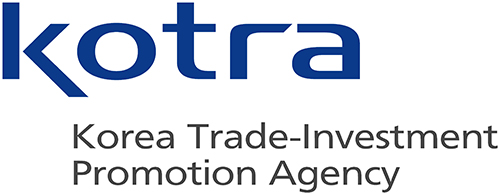
- French Air Liquide SA, the world’s biggest supplier of industrial gases, has decided to invest 157 billion won (US$145 million) to build a new plant in Yeosu, a key industrial city in South Jeolla Province, South Korea. The plant is set to be completed by December 2019.
- South Korea’s central bank forecast that the country’s gross domestic product (GDP) would grow 3 percent in 2018.
- FDI in South Korea posted double-digit growth in the first quarter to more than $4.9 billion, due mainly to a big increase in investment from China. South Korea received US$22.94 billion worth of FDI commitments in 2017, rising 7.7 percent from a year earlier, according to the Ministry of Trade, Industry and Energy, and surpassing the $20 billion mark for three consecutive years.
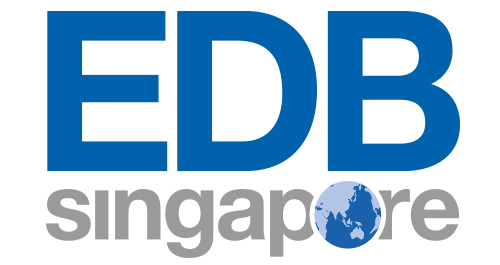
- The manufacturing and service sectors contribute to 77 percent of Singapore’s overall GDP growth.
- Singapore’s manufacturing sector saw its 19th straight month of improved conditions in March 2018, as its Purchasing Managers’ Index (PMI) edged up to 53.0 from an earlier 52.7.
- Singapore’s economic freedom score is 88.8, making its economy the second freest in the 2018 Heritage Foundation Index of Economic Freedom.
- Singapore is ranked No. 2 in the World Bank’s 2018 Doing Business report and No. 3 in IMD’s 2018 World Competitiveness Yearbook.
REGIONAL
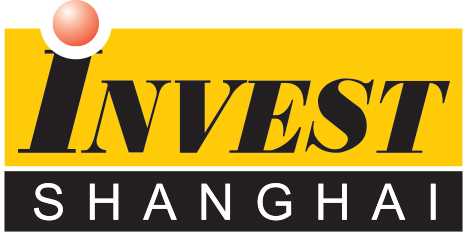
- By 2017, Shanghai was hosting more than 90,000 companies in knowledge-based sectors. Total R&D expenditure in the metro area is equivalent to around 3.8 percent of the city’s GDP.
- The world’s busiest container port is located in Shanghai.
- According to HSBC, Shanghai is the fourth most lucrative city for expats. Foreigners working in China’s financial hub can expect an average salary of $202,211.
- KPMG Ranked Shanghai third in the world for innovation by global business leaders, according to the GE 2018 Global Innovation Barometer Report.

- Hong Kong has an export-oriented economy and in spite of small size is the eighth largest trading entity in the world.
- Hong Kong is not only the world’s freest economy, but also the world’s most services-oriented economy, with services sectors accounting for more than 90 percent of GDP.
- According to the UNCTAD World Investment Report 2017, global FDI inflows to Hong Kong amounted to US$108 billion in 2016, ranked fourth globally, behind only the Chinese mainland (US$134 billion) in Asia. In terms of outflows, Hong Kong ranked third in Asia with US$62 billion, after the Chinese mainland (US$183 billion) and Japan (US$145 billion).
Eastern Europe & Central Asia
NATIONAL
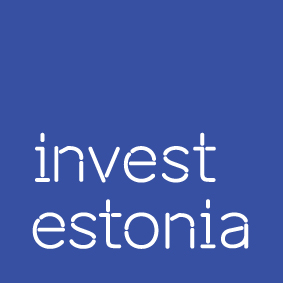
- Human capital, unique digital capabilities and a competitive business environment make Estonia a smart, agile location for business. Its ease of doing business is aided by the option of e-residency, through which a 100-percent online company can be started from anywhere in the world, with the ability to access business banking and online payment service providers, sign and authenticate documents anywhere, and easily declare taxes online.
- Estonia’s economy ended 2017 on a strong note, a trend that appears to have extended into the first quarter of this year. The economy grew 5 percent in annual terms in Q4 on the back of buoyant domestic demand, underpinned by sustained consumption growth and tightening labor market conditions amid raising wages.
- The economy benefits from strong electronics and telecommunications sectors and strong trade ties with Finland, Sweden, Germany, and Russia.
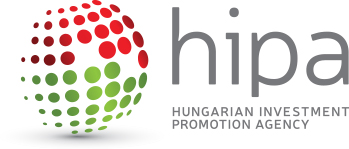
- Hungary’s population is estimated at 9.69 million, which ranks 89th in the world.
- The World Bank Group projects the country’s GDP to grow by 3.8 percent in 2018.
- Hungary has benefited in recent years from a change in direction of FDI from low-value textile and food-processing sectors to luxury vehicle, renewable energy, luxury tourism and information technology.
- Hungary has strengthened its position in the automotive industry as the regional hub for autonomous driving-related R&D and e-mobility. Altogether 36 of the projects are related to the vehicle industry, with an investment volume of 1,548 million resulting in 6,727 new jobs.
REGIONAL

- Companies operating in the Zone generate 22 percent of the total export of Izmir and 11 percent of the total export of the Aegean Region.
- The Free Zones Foreign Investments and Services General Directorate of the Turkish Ministry of Economy and the Aegean Free Zone Development and Operating Company (ESBAS) recently signed a preliminary protocol for development and operation of the Western Anatolia Free Zone in Bergama.
- In awarding the “2017 Turkey Excellence Award” to ESBAS (Aegean Free Zone Development & Operating Co.) in November 2017, the Turkey Quality Foundation (KalDer) recognized the zone’s Space Camp Turkey as a best practice in terms of “Creating a Sustainable Future.” Since opening in 2000, Space Camp Turkey (one of only three space camps worldwide) has welcomed more than 200,000 people from more than 60 countries.
- Turkey became the fastest-growing country in the world in 2017, with an economic growth rate of 7.4 percent and net FDI inflow of US$10.8 billion.
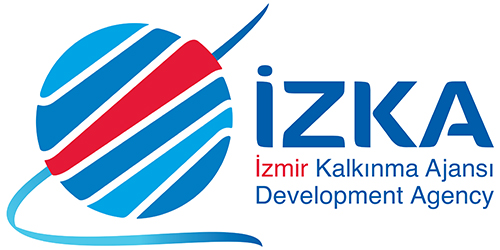
- Izmir offers a wide range of opportunities in industrial machinery, food and beverages, chemicals and tourism.
- Approximately 30 percent of the companies with international capital in Izmir operate in the industrial sector, with many manufacturing industrial machinery, a subsector accounting for more than 1,000 companies and employing nearly 20,000 people.
- Nine percent of the employment in Izmir belongs to the industrial machinery sector.
- Izmir is mainly home to companies producing petroleum and petroleum products, detergents, soap, medicine chemicals and paint.
- There are over 300 companies operating in the chemical sector in Izmir, whose exports represent 25 percent of Turkey’s overall exports in the sector.
Africa & Middle East
NATIONAL
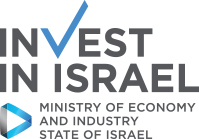
- Israel’s economy is set to grow at an annual pace of more than 3 percent through 2019 thanks to natural gas development and higher wages. According to the World Economic Forum’s Global Competitiveness Report 2016-2017, Israel was the second most innovative nation in the world 2016-2017.
- In December 2016, Israel formally published a law amendment that introduces an innovation box tax regime for intellectual property-based companies, tailored to a post-base erosion and profit shifting (BEPS) world and designed as part of an initiative to transform Israel into one of the most attractive jurisdictions for technology companies.
- Israel leads the world the number of professionals — including postgraduate PhD students — engaged in R&D per million people in the country.
- Facebook’s second-largest R&D center is located in Israel. Microsoft, Google, Apple, Intel, Samsung, HP, Siemens, GE, Philips, Alcatel-Lucent, Cisco, Toshiba, Barclays, Hutchison and LG spark the long list of over 270 multinational companies that have chosen to locate in Israel.

bahrainedb.com
- Bahrain’s economy expanded faster than expected at 3.4 percent year-on-year in the first half of 2017, and is projected to grow 3.7 percent in 2018 as oil rebounds. The economy will be supported this year by healthy infrastructure spending, including on key projects such as the Alba Line 6 expansion, a new airport terminal and a new oil pipeline to Saudi Arabia.
- To expand its energy mix, the nation is building its first liquefied natural gas (LNG) terminal. It is expected to be completed in 2019.
- According to the Central Bank of Bahrain (CBB), total FDI in 2017 reached $695 million by the end of October, more than double the year-end figure of $280 million in 2016. The CBB took steps to further enhance the climate for doing business over the course of the year, announcing a series of reforms to encourage FDI flows.
REGIONAL

- Sharjah’s 10-year GDP growth rate was estimated at 11 percent in 2017 and is predicted to grow by 2.7 percent in 2018.
- Sharjah expanded its 100-percent-tax-exempt free zones from two to three in 2018 to facilitate capital flow and investment opportunities in trade, industry, health care, light manufacturing and tourism.
- Its key geographical location among Africa, Asia & Europe, makes Sharjah a key regional hub for seafaring, transportation, logistics and supply chain operations. Sharjah has 19 industrial areas that contribute to more than 48 percent of the UAE’s gross industrial output, including the city of Khorfakkan, home to an expanding port and container terminal.

- Dubai ranks among the top 10 international cities in attracting foreign investment estimated at Dh27.3 billion ($US7.4 billion) in 2017, an increase of 7.1 percent compared to 2016.
- The city’s economy is expected to grow by 3.5 percent in 2018 and 3.7 percent in 2019.
- Credit insurer Coface recently issued a report that, among other forecasts, said Dubai’s hosting of World Expo 2020 will play “an important role in the development of the tourism, hospitality, real estate, construction, and transportation and infrastructure sectors.”
- Economic diversification has fueled an economic boom in Dubai. That same Coface report found that services now contribute 48 percent in terms of the UAE’s economic output, followed by extraction at almost 30 percent.
Western Europe
NATIONAL
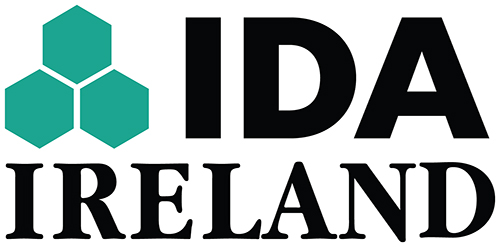
- Ireland’s performance as a hub for FDI is unrivalled. IMD ranks Ireland No. 6 in the world for overall competitiveness. And the country had the fastest-growing economy in the Eurozone from 2014 to 2017.
- Ireland welcomed €10 billion (US$12 billion) invested in new biopharma production facilities in Ireland in the last decade. The world’s top 10 biopharmaceuctical companies all have a manufacturing presence there.
- According to Ireland’s Central bank, an additional 89,000 jobs are expected to be created in the Irish economy over the next two years, bringing total employment to a record 2.3 million.

- The largest economy in the European Union grew by 2.5 percent in 2017.
- Around 70,000 foreign companies are located in Germany.
- Exports — one of the drivers of German economic growth — are set to increase by 5 percent this year, according to the BDI (Federation of German Industries).
REGIONAL

- With 1.07 million people, Birmingham is the second largest city and the second largest GDP in the UK after London.
- With an economy worth £24.8 billion (US$33.6 billion), Birmingham has seen a growth rate of 19.2 percent in the last five years.
- In 2017, The region attracted inward investments in advanced engineering, motor vehicles and transport, and electronic equipment. Basic metals still attract a degree of inward investment, as do food and drink, and more recently, financial services — a trend that looks set to continue.
- Birmingham has become a thriving commercial and financial center. It’s also the UK’s largest center of higher education outside London, home to five universities, two of which rank among the top 400 in the QS World University Rankings 2016-2017.

- Berlin, the capital of Germany and one of Germany’s 16 states, is the seventh most populous urban region in the European Union.
- According to Pew research, Germany’s capital city Berlin has been ranked as the best city in the world for millennials.
- In 2015, Berlin attracted more venture capital funding than either Paris or London, demonstrating Berlin’s ability to compete with larger cities. In the last five years, the startup scene in Berlin has grown rapidly, giving rise to many successful companies, such as EyeEm and GoEuro, and thus becoming a leading European ecosystem.
Latin America & Caribbean
NATIONAL

- Mexico is one of the most competitive countries for productive investment due to its low inflation, size and strength of its domestic market, economic growth rate, and its ability to attract advanced manufacturing.
- In January 2018, the IMF increased the forecast for Mexico’s economic growth in 2018 from 1.9 percent to 2.3 percent, 3-percent growth forecast for 2019. Value-added manufacturing accounts for 19.1 percent of GDP, according to the World Bank.
- FDI inflow to Mexico increased by US$5.9 billion to reach US$29 billion in 2017, making it the fifth largest recipient of FDI investment in the world.
- The liberalization of the energy and telecommunications sectors has increased its attraction of foreign investments to those sectors. In January 2018, Pemex struck a record deal by securing a US$93 billion investment for exploration operations of hydrocarbon reserves in partnership with Royal-Dutch Shell and Qatar Petroleum.

- Costa Rica’s GDP reached US$57.44 in 2017 — the strong performance of the country’s construction industry drove its economy up 3.5 percent.
- In 2017, the country’s consolidated industrial sector exported US$8.7 billion worth of goods, representing representing 76 percent of total goods exports.
- The Free Zone System of Costa Rica grants a competitive tax incentives scheme offering as low as 0-percent income tax to services and manufacturing sector firms.
- Costa Rica’s med-tech hub is home to six of the 20 largest medical device companies in the world.
- High levels of investment in education and human capital produce a well-qualified labor force, which in turn helps attract FDI from firms such as Intel, GlaxoSmithKline and Procter & Gamble.
REGIONAL
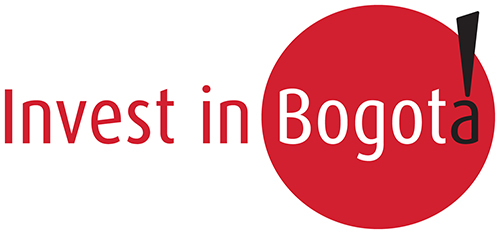
- Over the past 10 years, Bogotá has received more than US$16.7 billion in FDI, mainly in financial services and communications, making the city one of Latin America’s leading business centers.
- Home to over 16,000 companies, Bogotá is estimated to grow at a rate above the expected 2- to 2.5-percent national growth in the coming years. Sixty-two percent of Bogotá’s GDP is generated by the service industry.
- Colombia is one of the Best Business Environments in Latin America and one of the most competitive countries in the region. According to the World Bank’s 2018 Doing Business survey, Colombia has the fourth-best business environment in Latin America.
- Thanks to Colombia’s stable investor-friendly environment, FDI inflows have soared in the past few years. In 2017 the FDI inflows were US$14.5 billion.
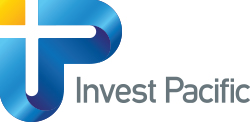
- The Valle del Cauca is located in the southwest of Colombia on the Pacific Ocean. Its capital Cali is known for, among other things, the quality of its salsa dancing. But the area knows FDI too, attracting $240 million worth in 2017.
- Forbes called Cali the second least expensive city to live in in the region, with rents between 25 and 30 percent less than in Medellín.
- The region has 4.7 million inhabitants, a population comparable with countries such as Costa Rica, Panama, Ireland and New Zealand. Its 2015 GDP was US$27 billion, higher than that of some Latin American countries such as Paraguay, El Salvador, Honduras and Nicaragua.
- Among other successes in 2017, the region continues to lead in bio-energy and egg production. Recent investors in expansion include Cargill, Sitel and Yara.
Notes and analysis by Conway, Inc. Chief Analyst Esther Cashbaugh

